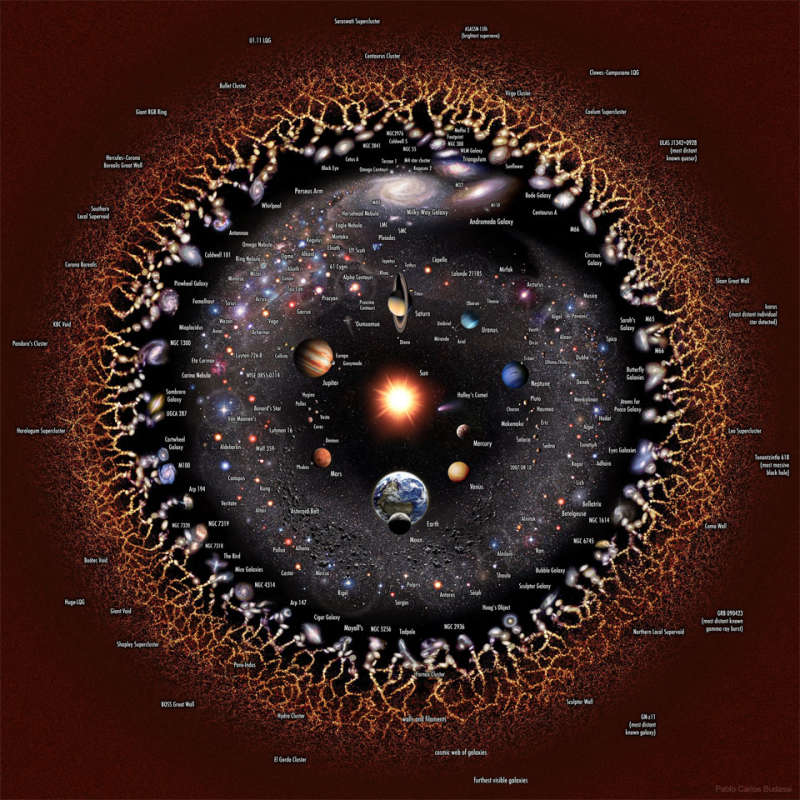Credit & Copyright: Wikipedia,
Pablo Carlos Budassi
Explanation:
How far can you see?
Everything you can see, and everything you could possibly see, right now, assuming
your eyes could detect all types of radiations around you -- is the
observable universe.
In light, the farthest we can see comes from the
cosmic microwave background, a time
13.8 billion years ago
when the universe was opaque like thick fog.
Some neutrinos and
gravitational waves
that surround us come from even farther out, but humanity does not yet have the technology
to detect them.
The featured image illustrates the observable universe on an
increasingly compact scale, with the
Earth and
Sun
at the center surrounded by
our Solar System,
nearby stars,
nearby galaxies,
distant galaxies,
filaments of early matter, and the
cosmic microwave background.
Cosmologists typically assume that our observable
universe is just the nearby part of a greater entity known as "the universe"
where the same physics applies.
However, there are several lines of popular but speculative reasoning that
assert that even our universe is part of a
greater multiverse where either
different physical constants occur,
different
physical laws apply,
higher
dimensions operate, or slightly
different-by-chance versions
of our standard universe exist.
Available:
High res image version with readable annotations |
Clickable annotation version
1999 2000 2001 2002 2003 2004 2005 2006 2007 2008 2009 2010 2011 2012 2013 2014 2015 2016 2017 2018 2019 2020 2021 2022 2023 2024 2025 |
Yanvar' Fevral' Mart Aprel' Mai Iyun' Iyul' Avgust Sentyabr' Oktyabr' Noyabr' Dekabr' |
NASA Web Site Statements, Warnings, and Disclaimers
NASA Official: Jay Norris. Specific rights apply.
A service of: LHEA at NASA / GSFC
& Michigan Tech. U.
|
Publikacii s klyuchevymi slovami:
universe - Vselennaya
Publikacii so slovami: universe - Vselennaya | |
Sm. takzhe:
Vse publikacii na tu zhe temu >> | |
